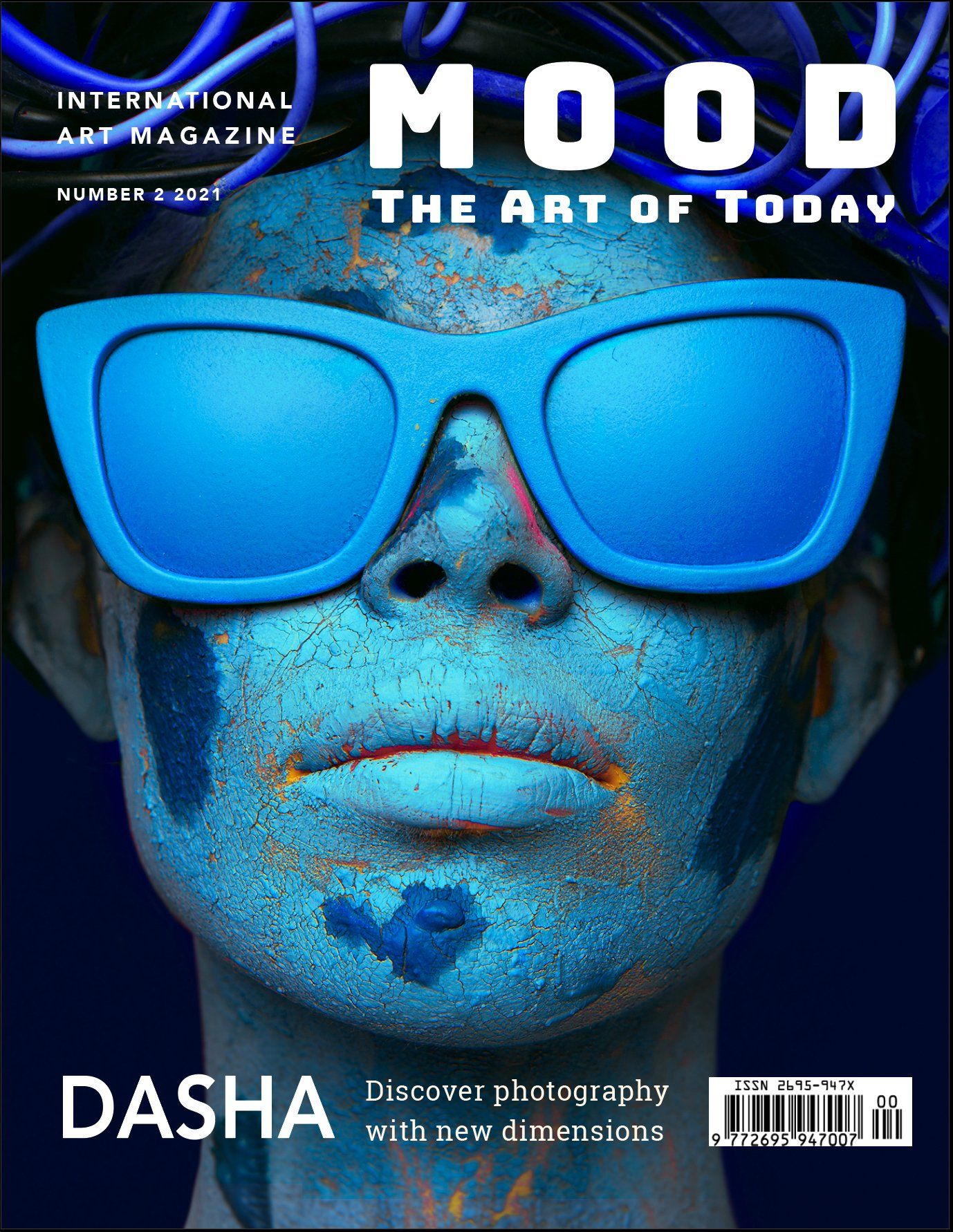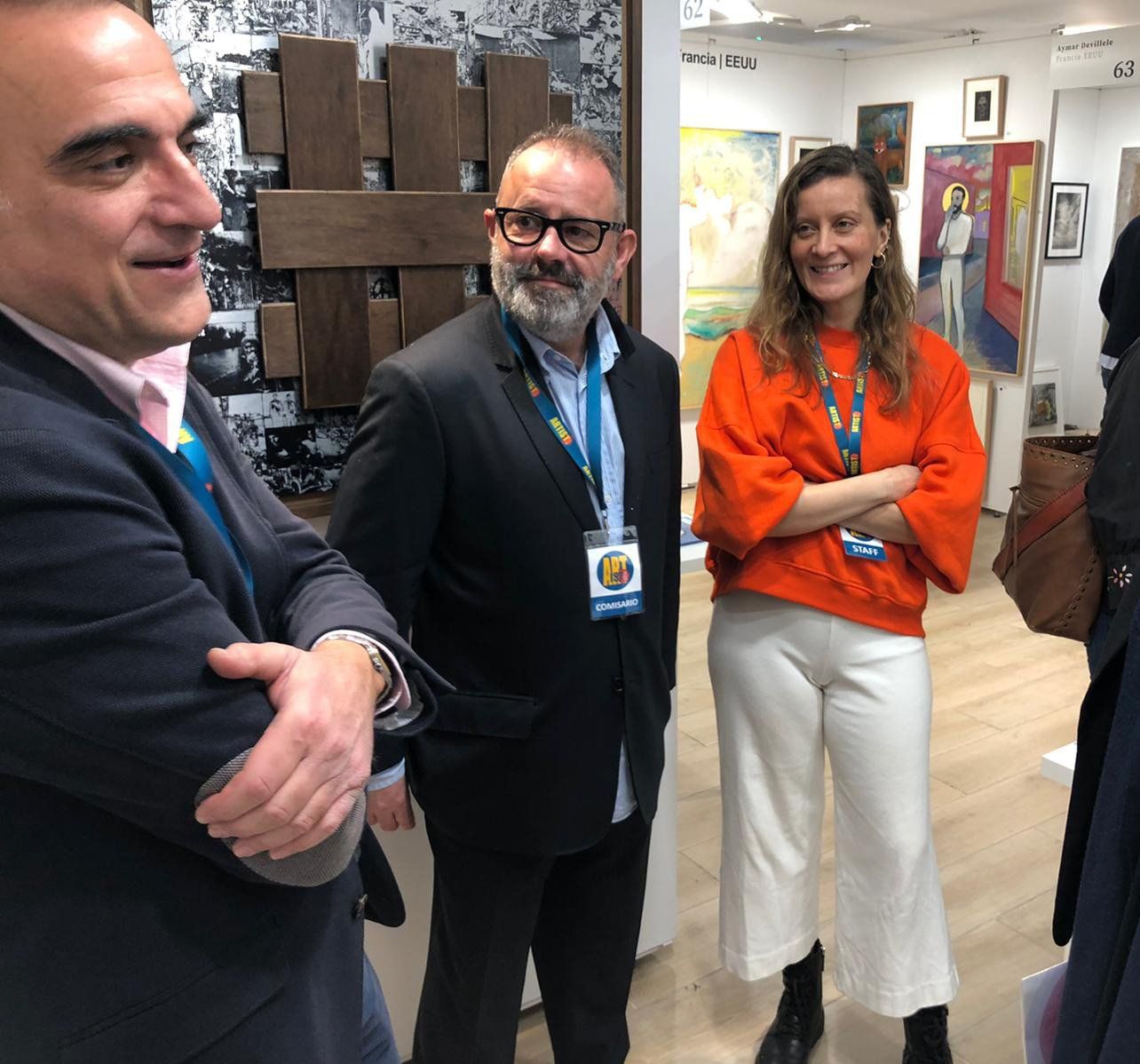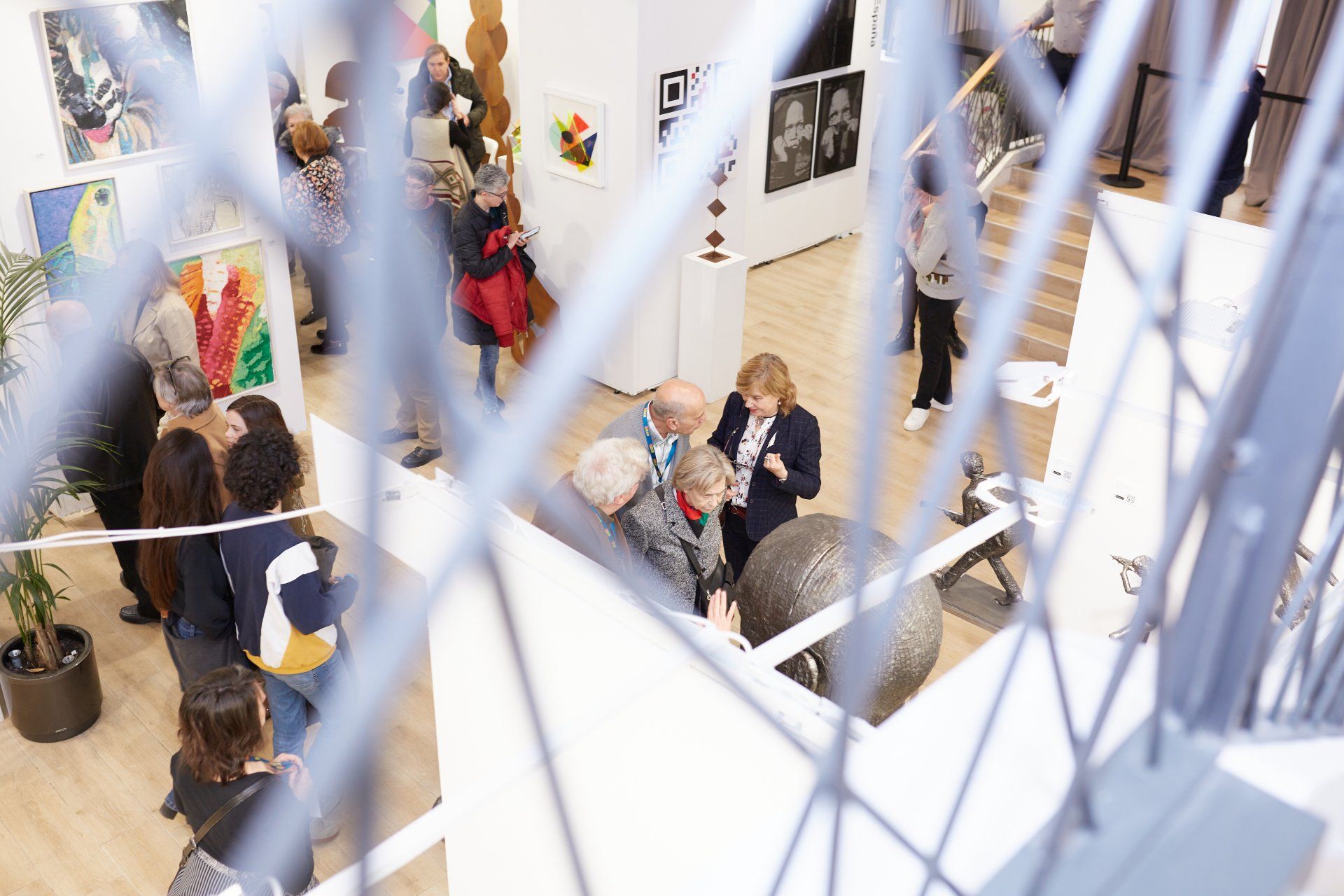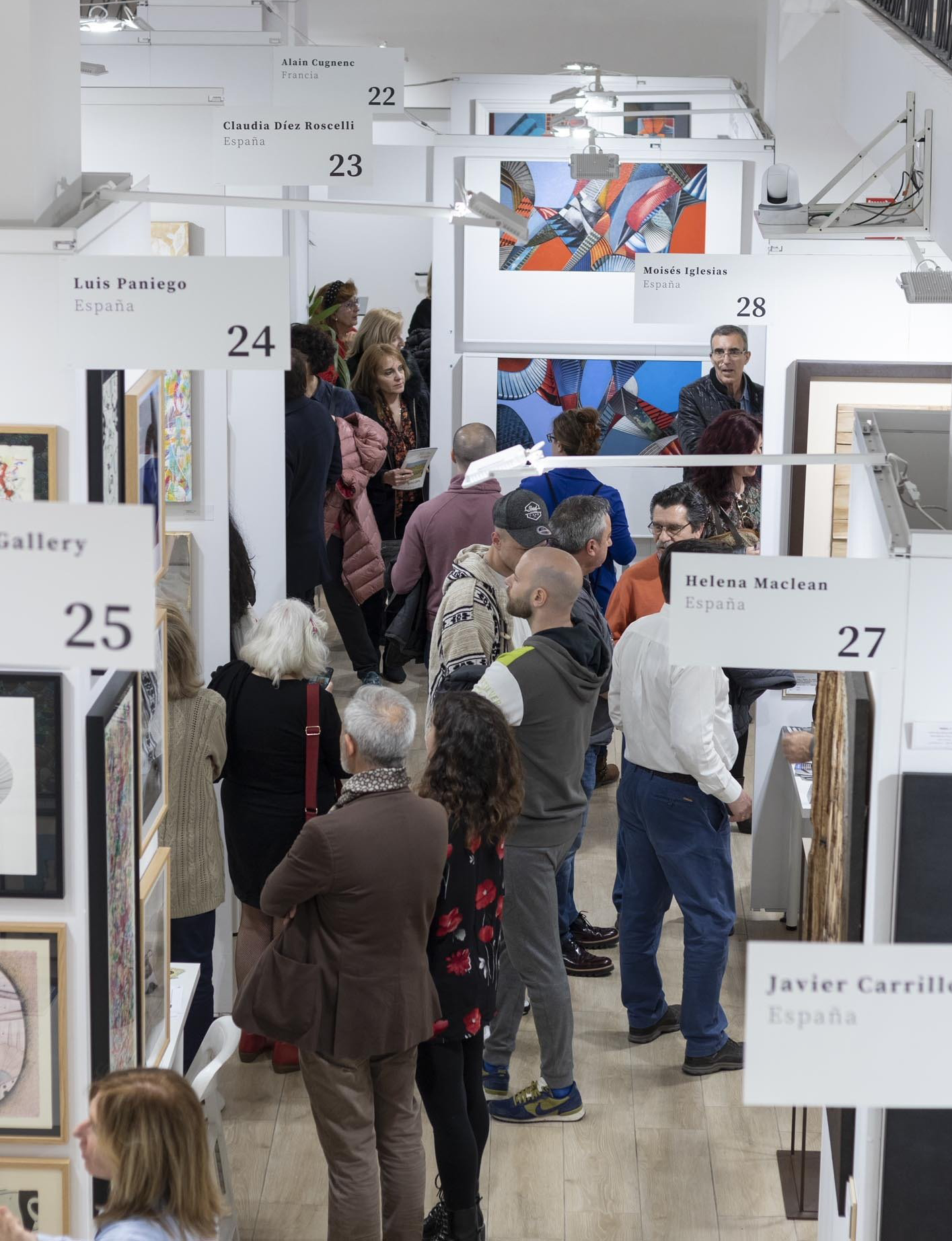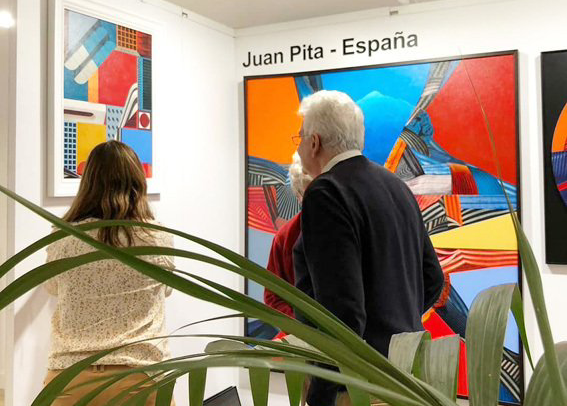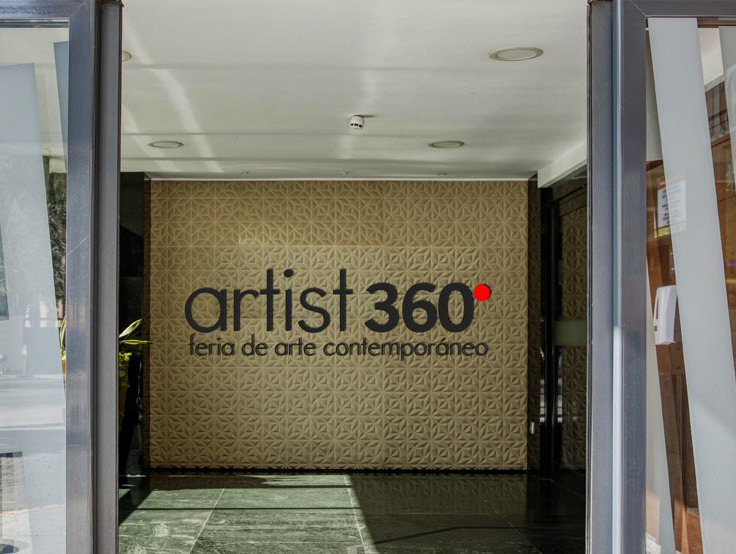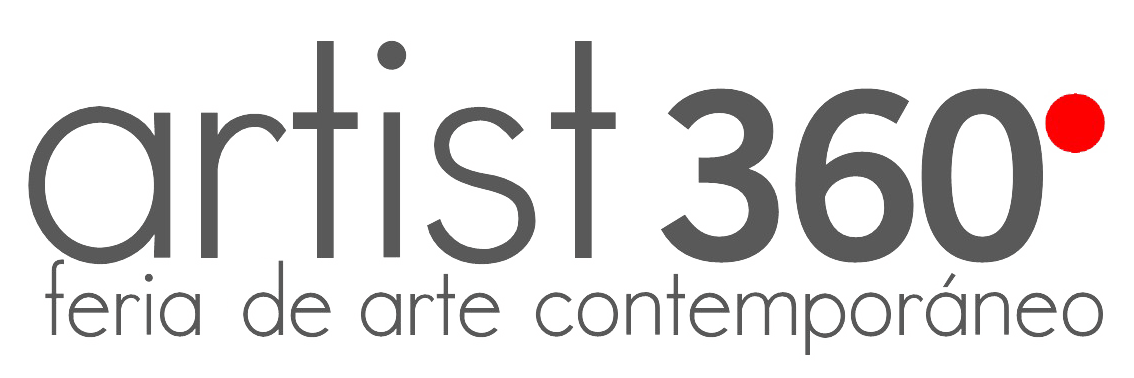ARTIST 360 Art Fair - Madrid
Contemporary Art Fair Artist 360º
- By Adriana Ruh
In recent months, we have seen how many cultural spaces and projects have had to close their doors or have been put on standby. Therefore, we are happy that this year in Madrid we can enjoy the II Contemporary Art Fair Artist 360º. According to the organisers, this is an event that seeks to recover the figure of the artist and their prominence on the stage of contemporary art.
In this second edition, innovation as well as innovative technologies are present to shape the event, which will be launched with challenging works of design, installation, and organisation. This fair consists of four events throughout the year, each one with its own theme. The next edition, entitled ‘Rebirth with Spring’, will take place from 2 to 6 June at the Ilunion Pío XII Convention Center in Madrid.
At ‘Mood The Art of Today’ we had the opportunity to interview Moisés Bentata, Director of the II Contemporary Art Fair Artist 360º and she provided more details in our conversation.
The pandemic has affected the cultural sector, as well as the rest of the creative sectors. How has this influenced the preparations for the fair?
- Well, it affected us a lot. We had the first call for the last week of February, which is the week of Contemporary Art in Madrid, and we had to suspend preparations, in the face of our expectations of many limitations relating to the event. However, we have already started the entire campaign for the June edition. Artists and galleries are lively. Artists produce and need to share their work, as well as to get feedback from the public. And that is what we are seeing; that there is really a lot of desire.
Well, it is important that there are a lot of expectations. What about the changes in the format of the event? I know that this fair will be held in four editions. Was this planned from the start?
- The proposal of putting on the fair at four distinct events was prompted by the idea that for some time now (and prior to the pandemic) we had seen that artist have fewer possibilities to share their work. Here in Spain, statistics shows that in the last 10 years two-thirds of the galleries have closed their doors and we already realised that the tension has been growing among artists. There is a lot of creativity, a lot of artists, but there aren’t many ways to enter the market.
As an organisation faced with the pandemic, we began to look for alternatives. Since we could not be presented in person, we explored the virtual path, and this has been explosive. During the last year, many virtual platforms have been developed, but these can hardly replace the emotional feeling of seeing live art.
An art fair usually takes place once a year, but it is not enough, especially in a city like Madrid where there is a large audience and a great desire to see art. Thus, we sought to create a model that would allow us to have an event in several editions and we came to the conclusion that we had to choose four important moments in the year: February because it is the Week of Contemporary Art in Madrid; June, because in spring there is always a good feeling and emotions; September, as this is the time when the galleries premiere their new exhibitions, and December because we believe that art is a good way to think about original gifts.
Let’s talk about the Platform 360, a digital exhibition that is available 24/7 on the fair’s website. How easy is it for an artist to obtain exposure using this tool?
Extremely easy. When we are setting up the exhibition, we do not ask the artist for anything beyond the images that they want to exhibit. All the staging is done by us and although everything is digital, we do it as if it were a real exhibition. All the decorative assembly, the signage, and other aspects are executed in detail so that we can recreate the feeling of being in a live exhibition. The 360 Platform is an innovation that helps the organisation and the artist, but in the end, you have to get to the face-to-face exhibition.
Let’s talk about the face-to-face event and what you have called the Discovery Space. What kind of space is this?
This fair breaks the rules. Conventional fairs tend to be 100% oriented to art galleries. Observing this situation, where there were many artists and few galleries, as well as few possibilities for artists to come to a fair, we decided to do put on an event in which the artist could have their own stand and not necessarily be hand-in-hand with a gallery.
In the earlier edition, we had an established artist at one stand, and an emerging artist on the other side. I don’t exaggerate, there are emerging artists who are sensational and have been on the market for a brief time, but this made the senior artist, but this made the senior artist, who already had a weighty reputation, feel irritated. So, we thought about how to solve this, because in an activity like this there are always many options for emerging artists, more artists ...
… with more innovative presentations?
That’s right, with more personal staging. So, we designed a space where we can locate these types of options: a more avant-garde, more modern, and fresher space, which is also not subject to conventional stand measurements. Rather, it’s derived from a basic measurement and both the exhibitor and the artist can add metres. The space is more flexible but also cheaper, because usually these new artists do not have the ability to pay for a conventional stand. It is something different in that sense, we don’t want to discriminate, we want to have greater diversity, and the truth is that we have marketed it very well and the success has been resounding.
And how was the space chosen to hold the event?
It is important to know that we have two priorities: the first is the artist and allowing them to exhibit individually, and the second is the visitors, whereby we develop an attraction for the general public, not necessarily only for professionals or collectors, because we also want to democratise the visit to the fair.
Regarding space, we chose the Hotel Ilunion Convention Center because it has incredibly good facilities and is easily accessible. It is an open space and has ceilings of 5 and 6 metres high. This is suitable when it comes to expanding to see the art while having that feeling of comfort.
The Discovery Space will be located on a terrace connected to the main hall of the fair. It will be covered, creating a different environment which will be cooler and also give additional confidence with regard to the pandemic by being in an open area and not so congested.
Going back to your idea of bringing the artist and their art closer to the public, can you tell us about the support you give the artist to market the works through Platform 360?
In a face-to-face fair, the standard arrangement is that if you go with a gallery, it applies a commission that, for an artist who is just starting or mid-career, can be between 40 and 50%. Here, the transaction is made by the artist as a direct sale, and 100% of the sale is returned to them. So, this is a benefit for the artist because they do not pay commission and for the purhcaser because the work will be cheaper. It is important to say that we’re not trying to fight the galleries, of course they must continue to exist.
There are artists who do not know how to sell their art and need the intermediation of the gallery to develop their brand. The 360 Platform complements the gallery system, and allows the artist to interact directly with the public.
How many visitors will be there during the art fair?
I would love to have 8,000 visitors again, but we know that the pandemic effect is going to have an impact on visitor numbers. But I can tell you that, although this year we’re going to have fewer visitors, it will be an audience of higher quality and you will be able to enjoy the art as it should be appreciated, without crowding and congestion.
Betting more on quality and less on quantity?
Yes, exactly. In art, quantity does not tell you anything. We bet on quality both in the organisation and in what is exhibited, and we are being very demanding in the selection of proposals, because not everything called art is art, or at least not in the light of our selection criteria.
I’d like to take this opportunity to ask what are the selection criteria or what techniques do you consider for exhibition from artists?
Regarding techniques, we are open to any plastic art or visual art: sculpture, photography, painting, performance, video, we have no limitations. In the team we are all artists and we have been in this profession all our lives, so when you have a work of art in front of you, you realise where there is an academic aesthetic that aligns with some of the canons of art. The criteria then, are derived from the visual education that the people who are part of the team have.
To conclude, as director of Artist 360º, what prospects do you see for the sector in this difficult year?
I think that the pandemic and the year we have had has been critical from the human point of view, due to the losses we have had and the complicated situations it has generated, but I believe that it is an opportunity to reinvent ourselves in all sectors. I think we have put everyone on the same starting ramp. Let me explain; this is something that no one could foresee, not the multinationals, not the large organisations and it has forced a whole reconceptualisation in many sectors. It is an opportunity for those who had not joined the development train to do so. I think it has been a great challenge because it has disrupted all the trends that existed in many sectors ...
… and somehow it has made us leave that comfort zone.
Right. I think this is positive. With all the misfortune it has brought and continues to bring, I think it has been positive in some aspects of our lives. It is time to realise that things are not as conventional as one thinks.

